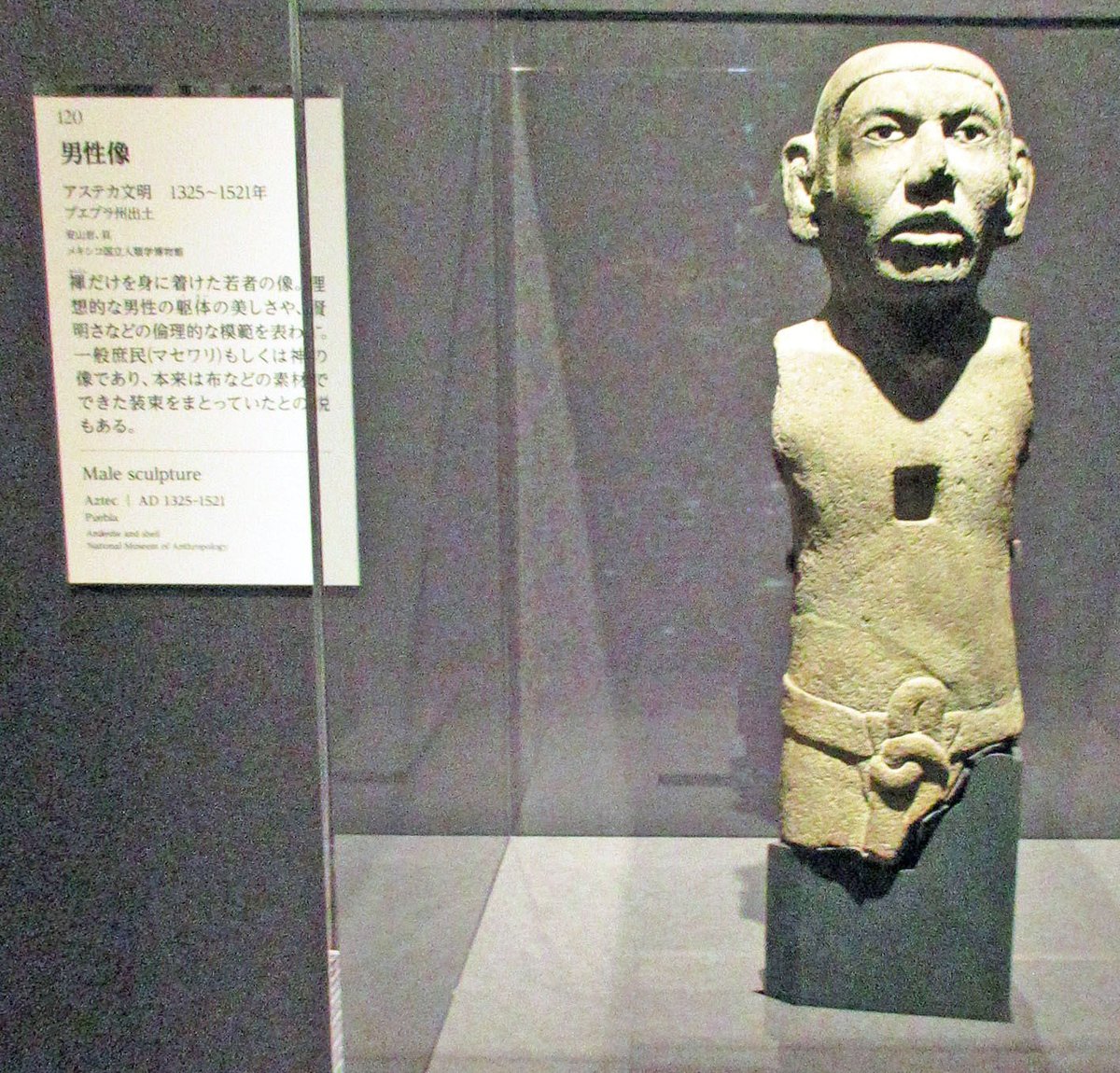
04.アステカ テノチティラトンの大神殿:特別展「古代メキシコ―マヤ、アステカ、テオティワカン」見聞録 その04
2024年03月20日、私は国立国際美術館を訪れ、一般客として、特別展「古代メキシコ―マヤ、アステカ、テオティワカン」(以下同展)に参加した([1],[2])。
同展「4 アステカ テノチティラトンの大神殿」での展示物を紹介する。
アステカは14世紀から16世紀にメキシコ中央部に築かれた文明である。首都テノチティトラン(現メキシコ シティ)は湖上の都市で、中央に建てられたテンプロ・マヨールと呼ばれる大神殿にはウィツィロポチトリ神とトラロク神が祀られていた。アステカも他の文明の伝統を継承し、王や貴族などを中心とする支配者層によって他の地域との儀礼や交易、戦争が行なわれた。([3],[4]のp.162-163)。
「メンドーサ絵文書」は、征服後の1541年頃、ヨーロッパ製の紙に書かれた文書である。作者は先住民で、スペイン語の書き込みが付け加えられている(図04.01,4のp.164-166)。

プエブラ州で、男性像が出土した(図04.02,4のp.168)。

テンプロ・マヨール(図04.03,4のp.167)から、マスクと耳飾り(図04.04,4のp.169)、鷲の戦士像(図04.05,4のp.170,171)、トラルテクトリ神のレリーフ(図04.06,4のp.172,173)、ミクトランテクトリ神の骨壺(図04.07,4のp.174)、シウコアトル(図04.08,4のp.174)、トラロク神の壺(図04.09,4のp.175)、プルケ神パテカトル像(図04.10,4のp.177)、笛(図04.11,4のp.179)、テスカトリポカ神の骨壺(図04.12,4のp.180)、ウェウェテオトル神の甲羅形土器(図04.13,4のp.181)、および、巻貝形ペンダントなどの金製品(図04.14,図04.15,4のp.182-183)が出土した。













そして、メキシコ シティから、エエカトル神像(図04.16,4のp.176)、サウマドール(香炉)(図04.17,4のp.178)、および、テポナストリ(木鼓)(図04.18,4のp.179)が出土した。



いずれの出土品も、アステカの歴史、特にテンプロ・マヨールの重厚さや荘厳さを感じさせるものである。
その一方で、男性像は非常に「いい味を出している」と思わせ、鷲の戦士像は『科学忍者隊ガッチャマン』や『鳥人戦隊ジェットマン』を連想させた。
参考文献
[1] 株式会社 朝日新聞社,特殊法人 日本放送協会(NHK),株式会社 NHKプロモーション.“特別展「古代メキシコ―マヤ、アステカ、テオティワカン」 ホームページ”.https://mexico2023.exhibit.jp/,(参照2024年07月18日).
[2] 株式会社 NHKエンタープライズ.“特別展「古代メキシコ ―マヤ、アステカ、テオティワカン」見どころからグッズまで徹底レポート!”.NHKグループ モール ホームページ.読みもの.2023年07月21日.https://nhk-groupmall.jp/blogs/read/ancient-mexico-report,(参照2024年07月18日).
[3] 独立行政法人 国立文化財機構 東京国立博物館.“特別展「古代メキシコ -マヤ、アステカ、テオティワカン」”.東京国立博物館 トップページ.展示・催し物.展示.平成館(日本の考古・特別展).https://www.tnm.jp/modules/r_free_page/index.php?id=2565,(参照2024年07月18日).
[4] 特別展「古代メキシコ―マヤ、アステカ、テオティワカン」公式図録,216 p.
